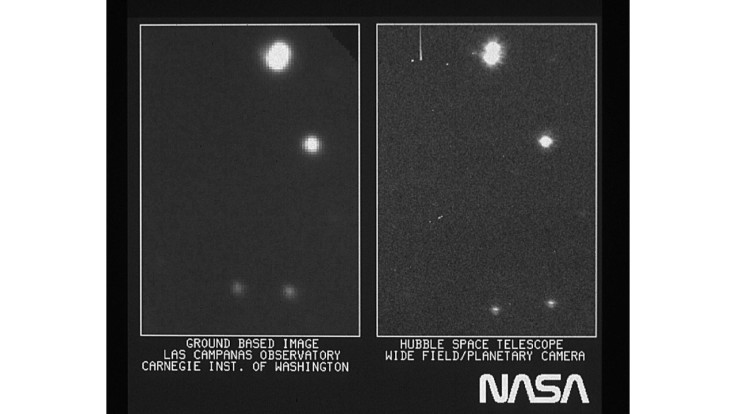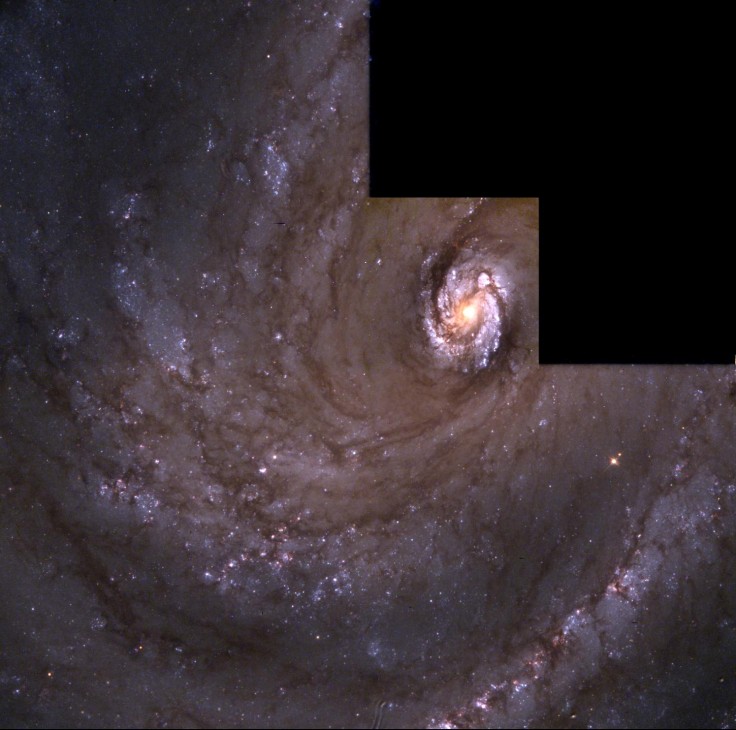There's always a first time for everything, even for top-of-the-line space telescopes like NASA's Hubble Space Telescope.
Even so, everyone's first time may not be as impressive as everyone would have wanted to be. You may mess up the first meal you ever cooked, your first sculpture may not be as great as you hoped it would be, and in the case of Hubble's first-ever picture, it is not as impressive to the average onlooker.
However, for NASA's astronomers and scientists, these pictures became proof that we can now see other celestial bodies from space itself.
The History Behind Hubble's First Photo

When the Hubble Space Telescope arrived in Earth's low orbit on April 25, 1990, it experienced equipment issues almost immediately, per Space.com. Its initial instruments, such as the Wide Field Planetary Camera, the Goddard High-Resolution Spectrograph, the Faint Object Camera, the Faint Object Spectrograph, and the High-Speed Photometer, should have been working as intended, but the telescope's first images came back so blurry that they were close to useless scientifically.
The problem was traced to Hubble's 7.9-foot-wide main mirror, which was discovered to have a defect - a spherical aberration caused by a manufacturing error. Even though the flaw was minuscule in size, being 1/50th of the sheet of paper's thickness, it was still big enough to cause major imaging problems.
According to Secrets of Universe's Bogdan Teodorescu, Hubble's mirrors were made by Perkin-Elmer, a company NASA worked with in the past.
Although NASA is still putting the blame on Perkin-Elmer for the failed first photo, the Administration itself may have played a part in the failure due to its lack of attention, which a lot of evidence suggested.
This particular image can be seen on NASA's website, with the failed first photo placed side by side with a ground-based image from the Las Campañas Observatory at the Carnegie Institute of Washington for comparison.
According to NASA's website, the first image Hubble took was intended to assist in focusing the telescope, with the 8.2-magnitude star HD96755 in the open cluster NGC 3532 in the southern constellation Carina being the target of said focusing. Instead, it helped NASA know what the telescope's problem was and what must be done to fix it.
Despite the aberration, Hubble's first picture offered more clarity than was generally possible with ground-based observations, which were made under the Earth's atmosphere creating a fuzzy or smearing effect on photos taken.
How NASA Fixed the Problem

Despite public ridicule, NASA endeavored to fix Hubble and give the world its first true glimpse of the final frontier.
NASA could replace Hubble's main mirror with a backup mirror from Kodak, but that would have been too expensive. This problem made NASA think of another solution: to create another mirror with the same aberration, but with an inverse effect, canceling the error out.
The Administration managed to fix Hubble's problem by installing other instruments that would help it take pictures more clearly, which include the Wide-Field Planetary Camera 2, on Dec. 2, 1993.
The next set of photographs from Hubble was breathtaking: they were clearer and sharper than it was with the aberration unsolved. One of these photos taken post-aberration repair was the picture of the spiral galaxy M100.









